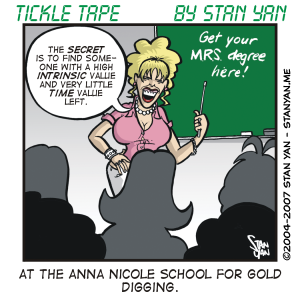Once a trade is entered, there are two possible outcomes: on the light side it can make money; on the dark side, it can lose. Between the light side and the dark side is the breakeven point, and because it is in-between, it has psychological significance. It separates fear and hope on the dark side and greed on the light side. The side you are on determines how you see this fulcrum.
When on the dark side of a trade, the breakeven point is a spot of light that inspires hope. Humans have a natural tendency to avoid risk and loss. When in the midst of a losing trade, many tend to hold on and hope that the loser will turn around and return to the breakeven point, where there may be no profits, but at least there are no losses. But hoping often leads to losses in the end. Hope has no place in making trading decisions. When putting on a trade, the entry point and the protective stop should be calculated upfront. If this is done properly, there is no reason to let hope, or any other emotion, influence your trading decisions. You should trade almost mechanically. If the trade goes against you, simply exit once the stop price is hit. Don’t let hope to play a role in your trading plan.
There are many good reasons to cut your losses, rather than hope for the loser to turn around. When you are in a losing trade, you are rarely alone. Many other traders are also long, for example, trying to exist without a loss. And there are shorts defending this area to protect profits. It’s unlikely that you can be the victor of this contest, so the best choice is to just cut your losses, and move on to the next trade.
The vantage point from the light side is quite different. In the midst of a winning trade, traders tend to take profits too early, again because they are averse to risk and potential loss. By exiting early, however, they don’t let their profits run. This limits the size of the winning trades so that across a series of trades, the overall profit is diminished. But there’s a way to lock in profits, let the trade run a little longer, and pile on a little more profit. Once the profit exceeds the initial stake, a stop can be placed at the breakeven point. This strategy lets you lock in some initial profits while virtually eliminating risk. The most you can lose is commission costs. Besides reducing financial risk, emotional stress is also eliminated. And reduced stress means you can evaluate the bigger picture more objectively.
Unfortunately, many novice traders are so consumed with capturing a profit and showing a green profit/loss statement that they cannot follow through with moving the stop to the breakeven point. They feel the strategy inhibits them and may limit their potential profits. They wrestle with moving the stop back to its original point, where they entered, or simply cancel it altogether. This can be disastrous to a trading account. Stops should never be changed to a more harmful position or cancelled altogether. Such practices will stir up emotions that adversely sway trading decisions, and eventually lead to one’s demise. Discipline is always the best strategy.
Whether on the dark side of the light side of the breakeven point, it’s useful to realize its psychological significance. When on the light side, you’ll be motivated by fear and hope. While on the light side, you’ll be motivated by greed. It’s vital to recognize these emotional tendencies and do everything possible to counteract them.

